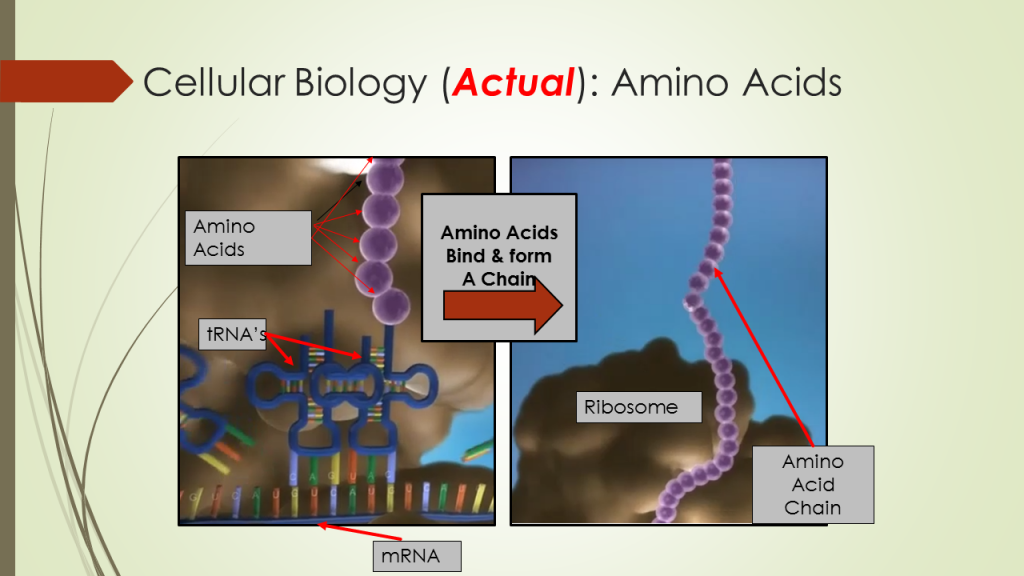Three letter “codons” copied from DNA by RNA “messengers” are used to translate, like a ticker tape, twenty unique amino acids into protein chains. This is called protein synthesis (described in the video to the left).
Computer programming is a way of giving computers instructions about what they should do next. These instructions are known as code, and computer programmers write code to solve problems or perform a task. The end goal is to create something…”
https://news.codecademy.com/what-is-computer-programming/
Of course, protein synthesis is very complex and actually beyond such a simple analogy, however, the analogy can be helpful in clearly illustrating the significance of informational code as the driving force behind life itself.

DNA is Information. (See image below). Language, such as the DNA process of protein synthesis, uses all the components of information including a “statistical signal”, “syntax”, and “semantical” code.
The statistical signal is translated from the DNA structure A-T-G-C. The syntax and semantics are translations of the statistical signal of DNA into amino acid “letter” formation (via tRNA) which pragmatically results in the formation of protein chains (the intended purpose: apobetics).

Information is “knowledge communicated or received concerning a particular fact or circumstance.”
Random House College Dictionary
The University of North Carolina School of Information defines Informational science on three foundational pillars (parenthesis ours):
(1) Content: the substance of the information created, communicated, stored, and/or transformed. (DNA, RNA, tRNA, ribosomes);
(2) Intelligent Persons: recipients of information, senders, or intermediaries in the communication process. (intermediaries: DNA, RNA, tRNA, ribosomes render protein chains; sender of the code is an intelligent designer of the communication process);
(3) Code used for the creation: communication, storage, or transformation of the content of information. (DNA storage, RNA communication, and Amino Acids via tRNA transform into protein chains).
https://catalog.unc.edu/undergraduate/schools-college/information-library-science/
Information (by scientific definition) cannot arise through purely naturalistic processes as such an occurrence would be paradoxical. Information requires Content, Intelligence, and Code none of which can arise without both purpose and design.


